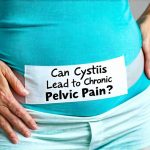Bladder health is often an overlooked component of overall well-being, yet it significantly impacts quality of life. Many individuals experience issues ranging from mild urgency and frequency to more debilitating conditions like overactive bladder (OAB) and interstitial cystitis/bladder pain syndrome (IC/BPS). Traditional approaches to managing these conditions frequently involve pharmacological interventions, but a growing understanding recognizes the profound influence of lifestyle factors on bladder function. This article explores how a holistic approach – integrating lifestyle-supportive pharmacology – can optimize bladder health, moving beyond simply treating symptoms and towards fostering long-term resilience. It’s about finding ways to synergistically combine medication with dietary adjustments, behavioral therapies, and mindful practices for the best possible outcomes.
The conventional pharmaceutical landscape for bladder issues often centers on medications that target specific pathways involved in urgency, frequency, or pain. However, these medications aren’t without potential side effects, and their effectiveness can vary significantly between individuals. Moreover, relying solely on medication doesn’t address the underlying factors contributing to bladder dysfunction. Increasingly, healthcare professionals are recognizing the importance of a comprehensive strategy that acknowledges the interconnectedness of diet, stress levels, pelvic floor muscle function, and overall health. Lifestyle-supportive pharmacology isn’t about abandoning medications; it’s about maximizing their benefits while minimizing drawbacks through complementary lifestyle modifications. It’s a proactive approach focused on empowerment and long-term management.
Understanding Pharmacological Options & Their Limitations
The primary pharmacological interventions for bladder disorders typically fall into several categories. Anticholinergics and beta-3 adrenergic agonists are commonly prescribed for OAB, working to relax the detrusor muscle (the bladder’s main contracting muscle) and increase bladder capacity. These can be effective in reducing urgency and frequency, but common side effects include dry mouth, constipation, and blurred vision. Another class of drugs, tricyclic antidepressants, have also been used off-label for OAB due to their anticholinergic properties, though they carry a different set of potential adverse effects. For IC/BPS, treatment is more complex, often involving pain management strategies utilizing medications like pentosan polysulfate sodium (Elmiron), although its long-term use has raised concerns and alternative approaches are frequently explored.
It’s crucial to acknowledge the limitations inherent in these pharmacological interventions. Many individuals experience limited or no relief from medication alone, and side effects can significantly impact adherence. Furthermore, medications often address symptoms without addressing the root causes of bladder dysfunction. For example, an anticholinergic may reduce urgency but doesn’t change dietary habits that contribute to bladder irritation. This is where lifestyle modifications become essential – they work in conjunction with medication to address these underlying factors and enhance treatment efficacy. A nuanced understanding of how different medications interact with the body, combined with a personalized approach to lifestyle interventions, is key to effective bladder health management.
The challenge lies in recognizing that the bladder doesn’t exist in isolation. It’s intricately connected to other bodily systems, including the nervous system, digestive system, and hormonal balance. Ignoring these connections can lead to suboptimal outcomes. Lifestyle-supportive pharmacology aims to bridge this gap by acknowledging the whole person and tailoring interventions accordingly.
Dietary Considerations for Bladder Health
Diet plays a surprisingly significant role in bladder health. Certain foods and beverages are known bladder irritants, meaning they can exacerbate symptoms of urgency, frequency, and pain. These commonly include:
- Caffeine
- Alcohol
- Spicy foods
- Citrus fruits and juices
- Artificial sweeteners
- Carbonated beverages
- Tomatoes and tomato-based products
Identifying and eliminating or reducing these triggers is often the first step towards dietary modification. However, a restrictive diet isn’t always necessary or desirable. Instead, an elimination diet – systematically removing potential irritants for a period of time and then reintroducing them one at a time to assess tolerance – can be incredibly helpful in pinpointing individual sensitivities. Beyond avoiding irritants, incorporating bladder-soothing foods into the diet is also beneficial. These include:
- Foods rich in antioxidants (berries, leafy greens)
- Hydrating fluids like water and herbal teas (avoiding diuretics)
- Anti-inflammatory foods (fatty fish, turmeric)
- Fiber-rich foods to promote healthy digestion and reduce constipation.
Constipation can put pressure on the bladder, worsening symptoms. Moreover, maintaining adequate hydration is crucial for diluting urine and reducing irritation. Dietary changes should be personalized based on individual tolerance and preferences, guided by a healthcare professional or registered dietitian.
Pelvic Floor Muscle Training & Biofeedback
The pelvic floor muscles play a vital role in bladder control. Weakened or dysfunctional pelvic floor muscles can contribute to urinary leakage, urgency, and frequency. Pelvic floor muscle training (PFMT) – often referred to as Kegel exercises – involves strengthening these muscles through targeted contractions and relaxations. However, simply performing Kegels isn’t always enough. Many individuals perform them incorrectly, leading to ineffective results or even exacerbating symptoms.
This is where biofeedback comes in. Biofeedback uses sensors to provide real-time feedback on muscle activity, allowing individuals to learn how to properly contract and relax their pelvic floor muscles. A trained physical therapist specializing in pelvic health can guide patients through biofeedback sessions, ensuring correct technique and personalized exercise programs. Beyond strengthening, PFMT also incorporates relaxation techniques to address muscle tension and improve overall pelvic floor function. Combining PFMT with lifestyle adjustments—like mindful bladder emptying habits (avoiding rushing or straining)—and appropriate pharmacological interventions enhances the effectiveness of treatment.
Stress Management & Mind-Body Techniques
Chronic stress can significantly impact bladder health. The nervous system plays a crucial role in bladder control, and when chronically activated by stress, it can lead to increased urgency, frequency, and even pain. Learning effective stress management techniques is therefore an integral part of lifestyle-supportive pharmacology. These techniques include:
- Mindfulness meditation
- Deep breathing exercises
- Yoga
- Progressive muscle relaxation
- Cognitive Behavioral Therapy (CBT)
CBT is particularly useful as it addresses the thought patterns and behaviors that contribute to stress and anxiety surrounding bladder symptoms, often leading to a vicious cycle of worry and increased urgency. Mind-body techniques help regulate the nervous system, reducing overall stress levels and improving bladder control. Furthermore, cultivating a sense of calm and relaxation can enhance the effectiveness of other treatments, including medication and PFMT. The goal is not just to manage symptoms but also to address the underlying psychological factors that contribute to bladder dysfunction. Prioritizing mental well-being is an investment in long-term bladder health.
In conclusion, lifestyle-supportive pharmacology represents a paradigm shift in how we approach bladder health. It moves beyond simply treating symptoms with medication and towards fostering resilience through holistic interventions. By integrating dietary adjustments, pelvic floor muscle training, stress management techniques, and appropriate pharmacological options, individuals can achieve significant improvements in their quality of life and regain control over their bladder function. This proactive and personalized approach empowers patients to take ownership of their health journey and build a foundation for long-term well-being.





















